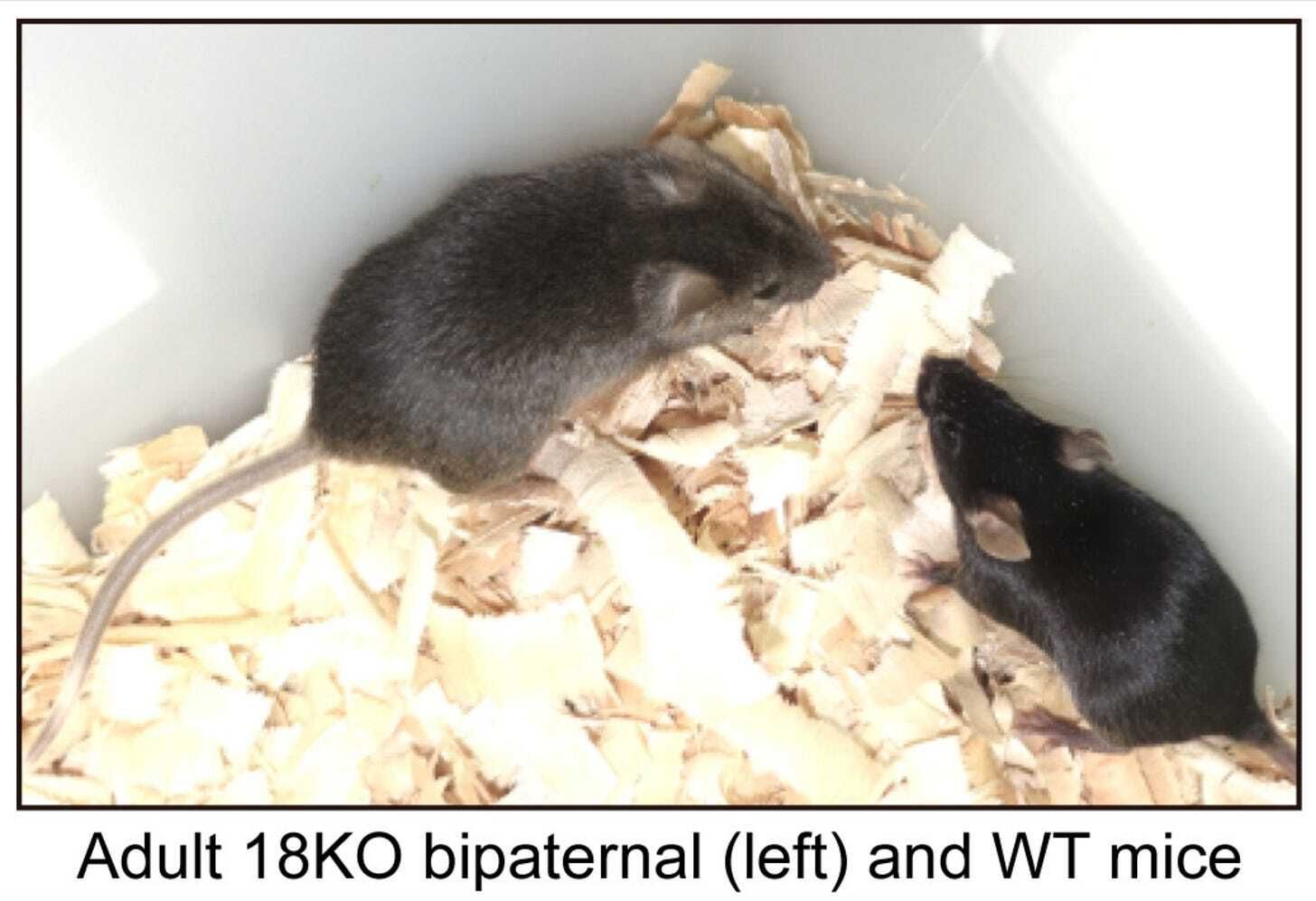
In January, a research team based in China published a landmark accomplishment: mice with two genetic fathers that survived into adulthood. This particular feat had remained elusive as previous attempts had resulted in mouse pups that died shortly after birth. In 2020, the same group overcame these barriers to generate bi-maternal mice (i.e. mice with two genetic mothers).
It’s worth noting that the barriers to bi-maternal or bi-parental mice is not simply the incompatibility of two eggs or two sperms to fertilize each other. For example, some species, like whiptail lizards, overcome this incompatibility when performing parthenogenesis.
By the early 1980’s, scientists had also developed techniques to overcome this fertilization incompatibility by extracting a cell nucleus (and the DNA it contains) and inserting it into a different cell. Using this technique, two separate research teams extracted nuclei from eggs and sperm collected from mice, inserted combinations of nuclei into cells, and tested whether the combined nuclei could generate viable embryos.
If fertilization was the only barrier to bi-maternal and bi-paternal offspring, then any combination of two nuclei (egg/egg, egg/sperm, and sperm/sperm) should be viable. However if there are additional barriers, then only the egg/sperm nuclei combination would be viable. Indeed, both research teams reached this conclusion - that there is another, unknown barrier to bi-maternal and bi-paternal embryos.
In their publication, one group speculated that genes could be modified in some way so that a cell could interpret whether that gene copy was a maternal or paternal contribution. Development would only proceed if both maternal and paternal contributions are detected.
Seven years later, this hypothesis was confirmed through the discovery of genetic imprinting. Essentially, imprinted genes are chemically modified with a methyl group, and the identity of imprinted genes differ in eggs and sperm. For example, if a mouse cell detects methylation of the Igfr2 gene, then that gene copy derived from the egg donor. But if methylation is instead present at the Igf2 gene, then that gene copy is derived from the sperm donor.
Critically, there is not a single gene that a fertilized embryo relies on to determine egg and sperm contributions. Instead, cells look for methylation at multiple sites in the genome before proceeding with development.
To overcome this, the Chinese research team used CRISPR gene editing in mice to change the imprinting profile of many (~18-20) genes. Sperm was collected from these edited mice, and two sperm nuclei were co-transferred into an egg cell that lacked a nucleus. Bi-paternal cells were then implanted in the uterus of a female surrogate mouse. Of these embryos, 13% survived until adulthood. Certainly there is room for improvement, but this is a considerable leap from 0% survival previously.
is this technique coming to a clinic near me anytime soon?
NO
All these experiments were done in mice, not humans. There are many reasons why this strategy is not ready for use in humans, including the low rate of success. Since the rate of survival is so low there may be health effects from the genetic mutations that the researchers have not yet pinpointed. Continued evaluation of these mice is critical.
In addition, these gene edits were made by CRISPR for the express purpose of transmitting the edited genes between generations. Such edits are referred to as germline mutations. There is a universal consensus among scientists that CRISPR germline mutations in humans is not safe. Too little is known about the effects.
One unknown about CRISPR editing is a high rate of off-target changes. While CRISPR mutations are guided by a small RNA molecule, even bacterial endonucleases make mistakes. I know multiple people who were using CRISPR in the lab, got an exciting result, but it turned out to be due to some unknown off-target mutation caused by the Cas9 enzyme. Fortunately, we were studying nematode worms and not human beings…
Needless to say, it will likely be a long time before CRISPR can be used safely to make germline mutations in humans. And therefore, it will be a long time before a human child is born from two sperm cells or two egg cells. But, this remains an exciting accomplishment as a reminder of how science can capture our imagination and prompt us to develop new ways of looking at the world and conceiving its possibility!
